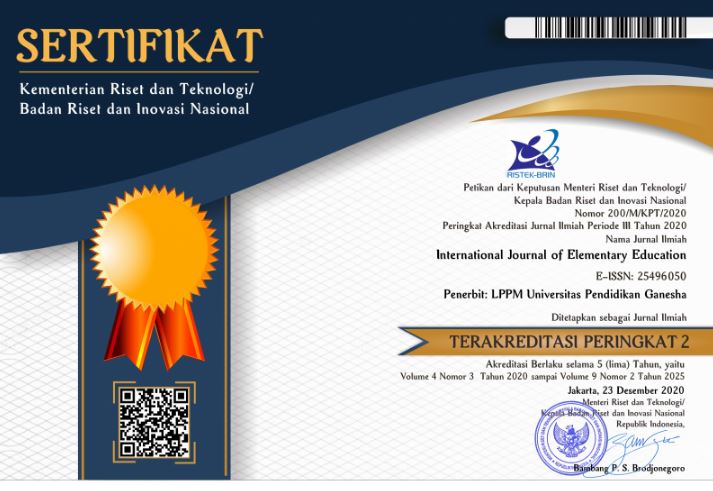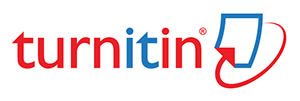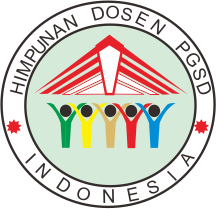Design Thinking-Based Learning Assessment Guidelines to Improve Creative Thinking Skills
DOI:
https://doi.org/10.23887/ijee.v8i3.74596Keywords:
Learning Assessment Guidelines, Creative Thinking Skill, Design ThinkingAbstract
The creative thinking process is a process that students go through to generate ideas or notions (creativity) in solving problems. Lack of attention to learning assessment in elementary schools that is appropriate and supports student creativity causes low creative thinking skills of students. This study aims to develop a design thinking-based learning assessment guidelines for grade V elementary school students in IPAS subjects and analyze the validity, practicality and effectiveness of the design thinking-based learning assessment guidelines. This research is development research with ADDIE model. The subjects in this study included learning assessment experts, teacher practitioners, and fifth grade students. This study used data collection techniques, namely questionnaires/surveys and tests. Data analysis techniques used qualitative, quantitative and inferential statistical analysis (t-test). The results of this study are the results of validation by learning assessment experts obtained very good qualifications, the results of practicality testing by teachers obtained very good qualifications, and the results of the effectiveness test of the design thinking-based learning assessment guidelines showed a significant difference in the creative thinking ability of grade V students in IPAS subjects before and after participating in learning by using a design thinking-based learning assessment guidelines. This indicates that the design thinking-based learning assessment guidelines are effective because these learning assessment guidelines can assist teachers in designing and implementing assessments to explore and improve students' creative thinking skills comprehensively.
References
Adhitya, A., Astawan, I. G., & Adi, I. N. R. (2022). Pengembangan Instrumen Penilaian Keterampilan Berpikir Kritis Dan Berpikir Kreatif Berbasis Google Form. Jurnal Ilmiah Pendidikan Citra Bakti, 9(2), 250–261. https://doi.org/10.38048/jipcb.v9i2.682.
Adnin Rizki Kasdina, Fitri Siti Sundari, R. H. (2023). Pengembangan Instrumen Penilaian Berbasis HOTS Berbantuan Website Wordwall Pada Materi Bangun Ruang. Jurnal Ilmiah PGSD, 4(1), 88–100. https://doi.org/https://doi.org/10.36989/didaktik.v9i04.1626.
Agustiana, I. G. A. T., Tika, I. N., & Wibawa, M. C. (2021). Improving Creative Thinking Through Creative Responsibility Based Learning (CRBL) Model. International Journal of Elementary Education, 5(4), 547. https://doi.org/10.23887/ijee.v5i4.41277.
Agustin, N. (2023). Kemampuan Bepikir Kritis dan Kreatif Dalam Pembelajaran IPA Pada Siswa Minu Hidayatun Najah Tuban. 5(2), 28–40. https://doi.org/https://doi.org/10.51675/jp.v15i2.646.
Argina, A. W., Mitra, D., Ijabah, N., & Setiawan, R. (2017). Indonesian PISA Result: What Factors and What Should be Fixed? The 1st Education and Language International Conference Proceedings Center for International Language Development of Unissula, 69–79. http://lppm-unissula.com/jurnal.unissula.ac.id/index.php/ELIC/article/view/1212.
Ariani, R. (2023). Analisis Kemampuan Berpikir Kreatif Siswa Melalui Implementasi Pembelajaran Proyek Pembuatan Bel Listrik Sederhana. Jurnal Didaktika Pendidikan Dasar, 7(2), 603–616. https://doi.org/10.26811/didaktika.v7i2.879.
Arifah, M. N. (2020). Model Asesmen Dalam Praktek Perancangan Media Pembelajaran Berbasis Desain Thinking. Refleksi Pembelajaran Inovatif, 2(2). https://doi.org/10.20885/rpi.vol2.iss2.art1.
Dominggus, R., Kristin, S., Martha M, B., Since Y, K., Vera V, K., & CorneliLatu, P. (2021). Resource based learning design thinking (RBLDT): A model to improve students’ creative thinking skills, concept gaining, and digital literacy. Cypriot Journal of Educational Sciences, 16(1), 288–302. https://doi.org/https://doi.org/10.18844/cjes.v16i1.5528.
Goosen, R., & Steenkamp, G. (2023). Activating Accounting Students’ Decision-Making Skills Through a Reflective Self-Assessment Workshop on Learning Styles. International Journal of Management Education, 21(3), 100858. https://doi.org/10.1016/j.ijme.2023.100858.
Juniantari, M., Ulfa, S., & Praherdhiono, H. (2023). Design Thinking Approach in The Development of Cirgeo’s World Media. Jurnal Nasional Pendidikan Teknik Informatika (JANAPATI), 12(1), 42–55. https://doi.org/10.23887/janapati.v12i1.55203.
Kalosi. (2021). Penerapan Model Pembelajaran Mind Mapping Untuk Meningkatkan Kemampuan Berpikir Kreatif Siswa SMA Muhammadiyah Kalosi Kabupaten Enrekang. JIKAP PGSD : Jurnal Ilmiah Ilmu Kependidikan, 5(1), 226–231. https://www.academia.edu/download/76240284/pdfxc.pdf.
Kasri, M. A., Novan, Y., & Ramadhani, I. A. (2021). Penerapan Model Design Thinking pada Pengembangan Media Pembelajaran Berbasis Macro Media Flash. JURNAL PETISI (Pendidikan Teknologi Informasi), 2(2), 60–71. https://doi.org/10.36232/jurnalpetisi.v2i2.1531.
Kristiani, K. D., Mayasari, T., & Kurniadi, E. (2017). Pengembangan Asesmen Keterampilan Berpikir Kreatif Siswa SMP Negeri 5 Madiun pada Materi Cahaya dan Alat Optik. Prosiding SNFA (Seminar Nasional Fisika Dan Aplikasinya), 2(2011), 102. https://doi.org/10.20961/prosidingsnfa.v2i0.16374.
Kurnia, F., Rosana, D., & Supahar. (2017). Developing evaluation instrument based on CIPP models on the implementation of portfolio assessment. AIP Conference Proceedings, 1868(August). https://doi.org/10.1063/1.4995187.
Mufiannoor, E., Hidayat, M. T., & Soetjipto, S. (2017). Melatihkan Kemampuan Berpikir Kreatif Dan Pemahaman Konsep Dengan Pembelajaran Berbasis Inkuiri Terbimbing Pada Materi Interaksi Makhluk Hidup Dengan Lingkungan. JPPS (Jurnal Penelitian Pendidikan Sains), 5(2), 934. https://doi.org/10.26740/jpps.v5n2.p934-941.
Muhammad Irfan Luthfi, N. D. S. (2023). Design Thinking Untuk Analisis Masalah Pembelajaran Daring Pada Masa Pandemi Covid-19 di Indonesia. Jurnal Pendidikan Teknologi Informasi, 3(2), 193–204. https://doi.org/https://doi.org/10.51454/decode.v3i2.146.
Mujiburrahman, M., Kartiani, B. S., & Parhanuddin, L. (2023). Asesmen Pembelajaran Sekolah Dasar Dalam Kurikulum Merdeka. Pena Anda: Jurnal Pendidikan Sekolah Dasar, 1(1), 39–48. https://doi.org/10.33830/penaanda.v1i1.5019.
Mursidik, E. M., Samsiyah, N., & Rudyanto, H. E. (2015). Kemampuan Berpikir Kreatif Dalam Memecahkan Masalah Matematika Open-Ended Ditinjau Dari Tingkat Kemampuan Matematika Pada Siswa Sekolah Dasar. Pedagogia: Journal of Education, 4(1), 23–33. https://doi.org/https://doi.org/10.21070/pedagogia.v4i1.69.
Noveandini, R., & Wulandari, M. S. (2022). Implementasi Model Design Thinking Pada Perancangan User Interface Aplikasi E-Learning Praktikum Biologi Di Sma. G-Tech: Jurnal Teknologi Terapan, 6(1), 53–58. https://doi.org/10.33379/gtech.v6i1.1252.
Palupi, R., & Septiana, A. R. (2018). An analysis on students ’ writing problems in academic writing class of English department STKIP PGRI Tulungagung in academic year 2017 / 2018. IALLTEACH (Issues In Applied Linguistics & Language Teaching), 2(1), 37–45. http://journal.uib.ac.id/index.php/iallteach/article/view/351.
Pratiwi, G. S., & Suwirta, U. (2022). Penerapan Model Pembelajaran Koopratif Tipe Numbered Head Together (NHT) Terhadap Kemampuan Berpikir Kreatif Pada Mata Pelajaran Ekonomi. J-KIP (Jurnal Keguruan Dan Ilmu Pendidikan), 3(2), 332–339. https://doi.org/http://dx.doi.org/10.25157/j-kip.v3i2.6155.
Prawesti, A. J., Koesdyantho, A. R., & Widyaningrum, R. (2023). Assessment Hasil Belajar Peserta Didik Kelas Ivc Dalam Pembelajaran Online Di Sd Negeri Kroyo Sragen. Jurnal Sinektik, 4(2), 142–151. https://doi.org/10.33061/js.v4i2.5337.
Primayonita, N. K. K., Agustiana, I. G. A. T., & Jayanta, I. N. L. (2020). Model Creativity Learning Meningkatkan Keterampilan Berpikir Kreatif dan Tanggung Jawab Pada Mata Pelajaran IPA. Jurnal Pedagogi Dan Pembelajaran, 3(2), 211. https://doi.org/10.23887/jp2.v3i2.26551.
Riti, Y. U. R., Degeng, I. N. S., & Sulton, S. (2021). Pengembangan Model Pembelajaran Berbasis Proyek dengan Menerapkan Metode Design Thinking untuk Meningkatkan Keterampilan Berpikir Kritis Siswa Dalam Mata Pelajaran Kimia. Jurnal Pendidikan: Teori, Penelitian, Dan Pengembangan, 6(10), 1581. https://doi.org/10.17977/jptpp.v6i10.15056.
Sudarto, S., Jauhar, S., Rosmalah, R., Muliadi, M., & Mujahidah, M. (2021). Improving the Students’ Creative Thinking Skills Through The Implementation of Controversy – Based Integrated Science Learning Tools. Journal of Educational Science and Technology (EST), 7(3), 245. https://doi.org/10.26858/est.v7i3.26558.
Syifa, N., & Julia, J. (2023). Pengaruh Contextual Teaching And Learning (CTL) Terhadap Kemampuan Berpikir Kreatif Peserta Didik Pada Materi Perubahan Wujud Benda di SD Muhammadiyah 18 Medan. Al-Madrasah: Jurnal Pendidikan Madrasah Ibtidaiyah, 7(1), 271. https://doi.org/10.35931/am.v7i1.1707.
Tejedor, G., Segalàs, J., Barrón, Á., Fernández-Morilla, M., Fuertes, M. T., Ruiz-Morales, J., Gutiérrez, I., García-González, E., Aramburuzabala, P., & Hernández, À. (2019). Didactic strategies to promote competencies in sustainability. Sustainability (Switzerland), 11(7), 1–24. https://doi.org/10.3390/su11072086.
Widia, W., Syahrir, S., & Sarnita, F. (2020). Berpikir Kreatif Merupakan Bagian Terpenting dalam Meningkatkan Life Skills di Era Industri 4.0. Jurnal Pendidikan Ilmu Pengetahuan Alam (JP-IPA), 1(02), 1–6. https://doi.org/10.56842/jp-ipa.v1i02.6.
Yuli Nurul Fauziah. (2020). Kemampuan Guru Sd Dalam Mengembangkan Keterampilan Berpikir Kreatif Pada Pelajaran Ipa. Jurnal Pendidikan, 11(2), 61–77. https://doi.org/10.33830/jp.v11i2.556.2010.
Zaiyar, M., & Rusmar, I. (2020). Students’ Creative Thinking Skill in Solving Higher Order Thinking Skills (HOTS) Problems. Al-Jabar : Jurnal Pendidikan Matematika, 11(1), 111–120. https://doi.org/10.24042/ajpm.v11i1.5935.
Zulyusri, Z., Santosa, T. A., Festiyed, F., Yerimadesi, Y., Yohandri, Y., Razak, A., & Sofianora, A. (2023). Effectiveness of STEM Learning Based on Design Thinking in Improving Critical Thinking Skills in Science Learning: A Meta-Analysis. Jurnal Penelitian Pendidikan IPA, 9(6), 112–119. https://doi.org/10.29303/jppipa.v9i6.3709.
Downloads
Published
How to Cite
Issue
Section
License
Copyright (c) 2024 Ni Luh Made Yulia Widyastuti, I Nyoman Laba Jayanta

This work is licensed under a Creative Commons Attribution-ShareAlike 4.0 International License.
Authors who publish with the International Journal of Elementary Education agree to the following terms:
- Authors retain copyright and grant the journal the right of first publication with the work simultaneously licensed under a Creative Commons Attribution License (CC BY-SA 4.0) that allows others to share the work with an acknowledgment of the work's authorship and initial publication in this journal.
- Authors are able to enter into separate, additional contractual arrangements for the non-exclusive distribution of the journal's published version of the work (e.g., post it to an institutional repository or publish it in a book), with an acknowledgment of its initial publication in this journal.
- Authors are permitted and encouraged to post their work online (e.g., in institutional repositories or on their website) prior to and during the submission process, as it can lead to productive exchanges, as well as earlier and greater citation of published work. (See The Effect of Open Access)








